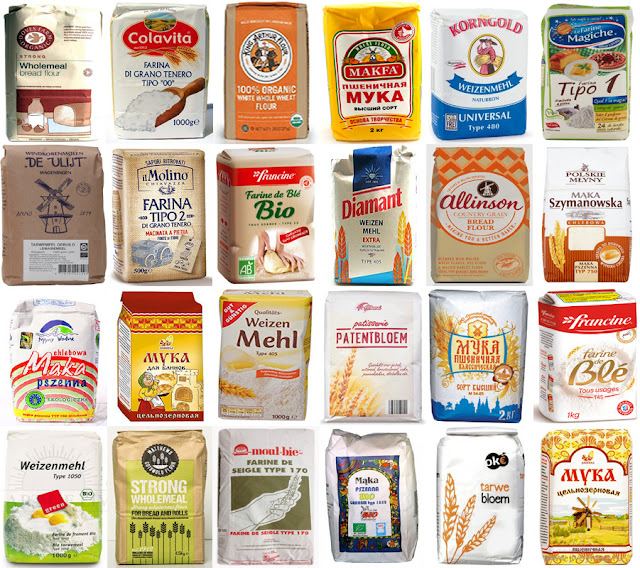Russian rye bread à la Borodinsky with zavarka in 3 days from scratch
Bread without sourdough or bakery yeast, made from scratch in 3 days, with YW (water, 2 difrent malts and raisins) according to the recipe from the rusbrot YT channel (I made it with half the ingredients). I baked it in a baking tin, in the à la Borodinsky version, sprinkled with coriander.
Originally, Borodinsky bread is made with sourdough. However, I recommend this method with fermentation of water, raisins and malt, because each of you has a different leaven, not necessarily well managed and the results may be different. Here, if you maintain the given temperature and time and stick to it, the result should be 100% success.
Using this recipe, you can also make your new rye sourdough from scratch! :) Simply get 10 g of leaven "opara" after 7 hours fermentation, add rye flour and water, just like a regular leaven. You will be surprised how quickly you can prepare a rye sourdough with a really great aroma and very good results. You can even make wheat sourdough from it.
Day 1 e.g. 24:00 midnight
YW (yeast water) fermentation:
light rye malt (calld: active, enzimatic or diastic) 25 g
red fermented rye malt (dark) 10 g
water t = 95.0°F (35°C) 100 g
raisins 7 g
We leave it for about 48 hours at 82.4-84.2°F (28-29°C)
Day 3 in the afternoon - preparation of the zavarka.
Zavarka:
rye flour 40 g
fermented red rye malt (dark) 15 g
crushed coriander 3 g
Pour 225 g of boiling water over everything (we add the water divided into two portions, it is easier to mix the zavarka) and mix thoroughly so that there are no lumps.
After mixing, when the mixture cools down a bit!!! add another portion of rye flour 45 g (source of enzymes that cut starch into simple sugars, these enzymes - amylases are naturally present in rye flour) and mix thoroughly again.
Leave the zavarka in a covered container to saccharify the starch for 3-4 hours at a temperature of 145.4-149.0°F (63-65°C). After this time, the zavarka should become more liquid and acquire a distinctly sweet taste.
You can also hide it under a blanket or pillow so that it does not lose its temperature quickly, but then leave it for longer, about 6 hours.
Zavarka:
- - gives breads a characteristic sweet taste and aroma
- - accelerates fermentation
- - increases the water absorption of flour and delays staling.
Day 3 e.g. 24:00 midnight preparing the leaven (RUS "opara").
"Opara"
After 48 hours, when the YW ferment on malts and raisins has gained "strength", it is still bubbling and hissing, has a pleasant alcoholic, sweet and sour smell (a bit similar to young wine or very ripe fruit) and a distinct, strongly sour taste.
Leaven ("opara"):
the whole YW ferment on malts and raisins after 48 hours
the whole saccharified zavarka
rye flour 75 g
Mix thoroughly and leave at 82.4°F (28°C) for about 6-7 hours until the leaven acquires a distinctly sour taste.
Day 4 in the morning 6:00-7:00 or a little later - preparing the dough and baking.
Bread dough:
all the leaven "opara"
honey, apple jam, sugar or sugar syrup 25 g
salt 10 g
rye flour 215 g
wheat bread flour 75 g
water until the dough becomes soft, approx. 30-40 g
Knead the dough into a uniform dough and leave it to ferment at 86.0°F (30°C) for 80-90 minutes.
After this time, put dough into a 25x11 cm mold and leave it for about 60-90 minutes at 86.0°F (30°C) to rise almost to the edges of the mold.
Before baking, I spread the leftover dough from the bowl mixed with water on top of the bread and sprinkled it with coriander seeds.
I baked for 10 minutes at 446°F (230°C), then reduced the temperature to 374-356°F (190-180°C) and baked for another 45-50 minutes.
After removing it from the oven, I spread the top of the still hot bread with a thin jelly made (cooked a little earlier) from a teaspoon of potato starch and a glass of water. This protects the bread from drying out and gives the crust a shine.
Enjoy your bread :)

The photo shows ferment on malts and raisins after 22 hours at 29°C. There are already clear signs of alcoholic fermentation (gas bubbles, foam on the surface, hissing) and lactic fermentation (distinct slightly sour sroma and taste). I leave the ferment, according to the recipe, until it starts working more intensively and becomes more acidic.









Thank you for the enthusiasm and energy you bring to your writing.
OdpowiedzUsuń